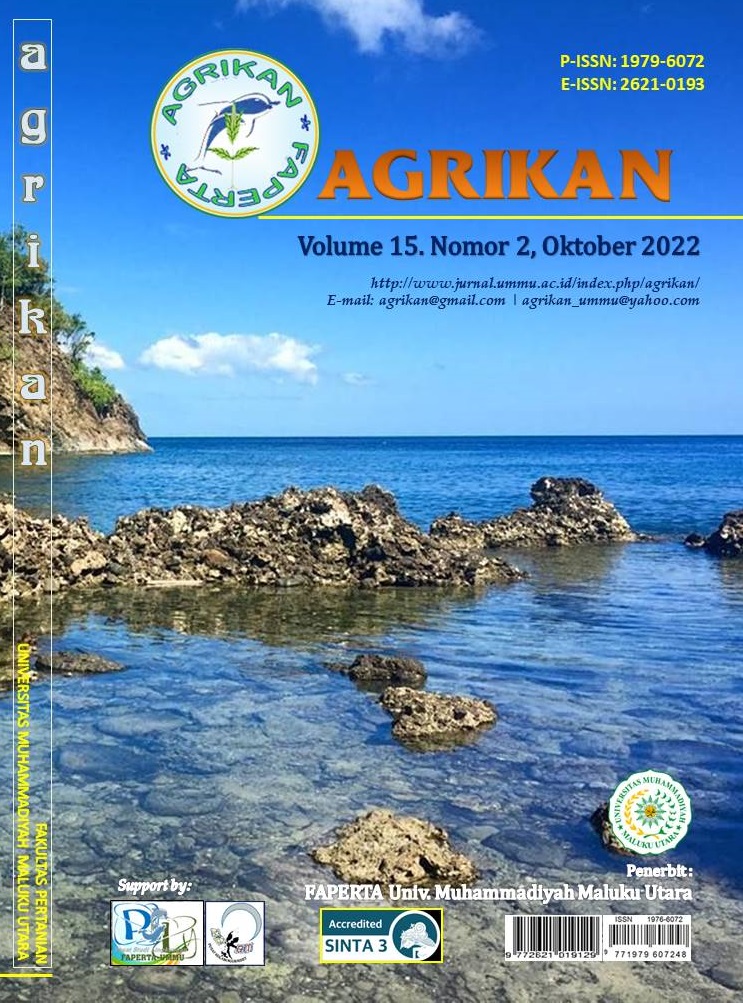Stocking Density And Different Water Discharge on Red Tilapia Cultured Using a Recirculation System
DOI:
https://doi.org/10.52046/agrikan.v15i2.1246Keywords:
Red Tilapia, Recirculation System, Stocking density, water dischargeAbstract
Red Tilapia is one of the freshwater fish favored by the community because of its delicious and savory taste and economic value. This study aimed to determine the best effect between stocking density and water discharge on the growth and survival rate of Red Tilapia (Oreochromis niloticus) cultured using by recirculation aquaculture system (RAS). The method used in this study was a factorial 2-factor Completely Randomized Design (CRD). Where the first factor is stocking density with a treatment level of P1 = 1 fish/liter of water, P2 = 4 fish/liter of water, P3= 7 fish/liter of water, and the second factor is water discharge with a treatment level of D1 = 30 ml/second, D2= 40 ml/second, D3= 50 ml/second. The observed variables included growth (total length and total weight) and survival rate (SR). The highest full-length yield was 3.9 cm in the P2D3 treatment (stocking density of 4 birds/liter and 50 ml/second). The highest absolute weight yield was 6.41 grams in the P2D3 treatment (stocking density of 4 fish/liter, water discharge 50 ml/second). Meanwhile, the highest survival rate was 98.15% in the P1D3 treatment (stocking density of 1 fish/liter, water discharge 50 ml/second). The results showed that the interaction between different stocking densities and water discharge did not significantly affect the growth and survival rate of Red Tilapia Fcount < Ftable.
Downloads
Published
Issue
Section
License
Copyright (c) 2022 Arafik Lamadi, Mulis Mulis, Husain K. Usman

This work is licensed under a Creative Commons Attribution 4.0 International License.

This work is licensed under a Creative Commons Attribution 4.0 International License.













